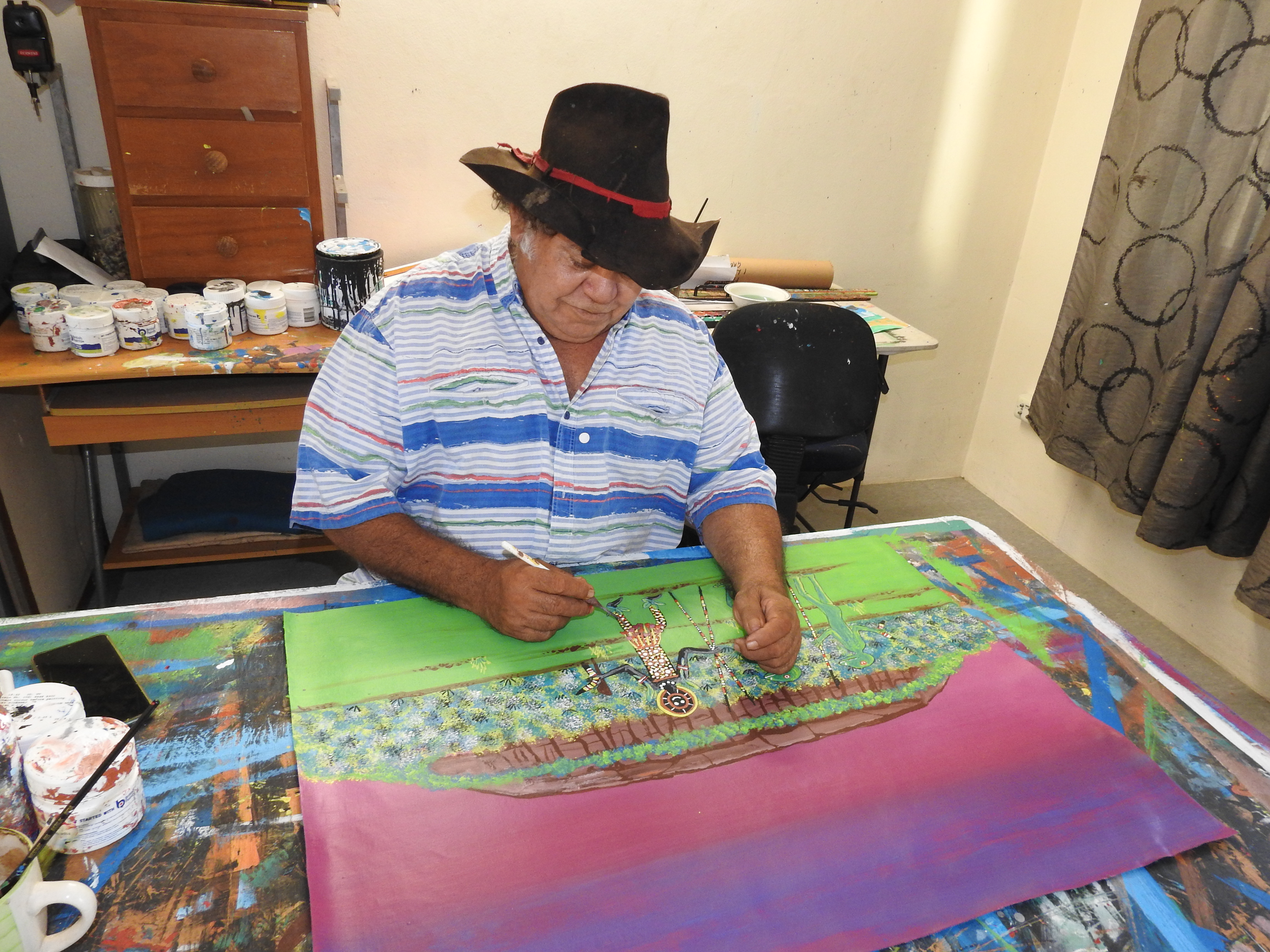Reggie Sultan painting the cover of one of the books yet to come. Courtesy of the Publisher.
Reggie Sultan
, b. 1955
Reggie Michael Sultan Apengarte is a Kaititja Aboriginal man from the Barrow Creek, 280 kilometres north of Alice Springs, the north Central Desert area. Born in Alice Springs, Northern Territory, in 1955, he is an artist and writer who depicts the traditional stories of the Central Desert, his mother’s country. Apengarte is his Kaititja skin name from his mother’s people. His father was descended from Afghan camel drivers.
Reggie’s father, Sumat “Sammy” Sultan, wouldn’t allow Aboriginal people in the house and forbade them to talk their language, yet he employed his mother’s family members to help with fencing contracts. Reggie suffered brutal beatings from his father. Reggie’s mother, Lorna Ross Peperill Sultan was a full-blood Kaititja woman from Barrow Creek who had led a traditional life and had several children before she met Sammy Sultan. She taught her children to find bush tucker (bush food) – bush onions, bush bananas, goanna (monitor lizard) and rabbits. She could not read or write. From the age of five Reggie attended Alice Springs Convent School. Whilst still in primary school Reggie was introduced to drawing and painting by people from the Santa Teresa Mission, landscape painters who taught him to mix colours. Intermittently over the years, Reggie was taught to paint by descendants of renowned Aboriginal artist, Albert Namatjira, whose high colouring of desert landscape changed the face of art in Australia.
Eight year old Reggie began to run away from school, at first to steal painting equipment. Then he kept getting into trouble and was sent to Engadine Boys Home, south of Sydney, New South Wales. Until the age of seventeen Reggie was sent to boys’ homes across the country, in New South Wales, South Australia, and the Northern Territory from where he escaped and began car stealing. After a stint in gaol Reggie began working as a stockman.
One day Reggie inadvertently transgressed traditional lore by driving with two women across a bush camp which was men’s territory. Caught by the traditional owners and forced to undergo the circumcision ceremony, he was made a man in Aboriginal law and thereby entitled to go on any land and “do any painting and this is where my artwork began”*. Becoming an artist was transformational for Reggie as a catalyst for painting the stories of his traditional country. He was told the story of the Seven Sisters by the mother of his brother’s Pitjanjara girlfriend.
* Sultan, Reggie, An Uncontrollable Child; the autobiography of an Aboriginal artist, Coolalinga, Northern Territory: David Welch Publications, 2008, 53.
Source:
Sultan, Reggie, An Uncontrollable Child; the autobiography of an Aboriginal artist, Coolalinga, Northern Territory: David Welch Publications, 2008.
Bio prepared by Margaret Bromley, University of New England, brom_ken@bigpond.net.au
Records in database:



